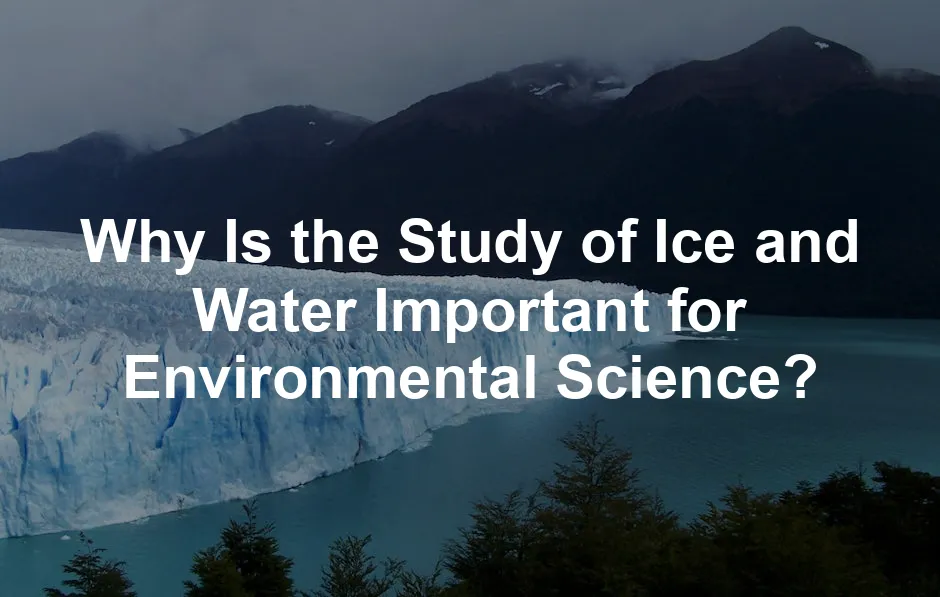
Why Is the Study of Ice and Water Important for Environmental Science?
Introduction
In a world increasingly affected by climate change, the study of ice and water is no longer just the realm of polar explorers and hydrologists. It has become a pressing concern for environmental scientists, ecologists, and policymakers alike. As we witness glaciers melting at unprecedented rates and water scarcity affecting millions, understanding the intricate relationship between these two elements is vital. Ice and water not only shape our planet’s geography but also influence weather patterns, ecosystem health, and human survival.
Ice plays a crucial role in regulating the Earth’s temperature by reflecting sunlight, while water drives the water cycle, essential for life. When glaciers retreat, they release freshwater, impacting ocean salinity and currents, which can disrupt global climate systems. The melting of ice caps and glaciers is a clear indicator of climate change, serving as a global temperature barometer.
Water is life. It sustains agriculture, industry, and our daily lives. However, freshwater is a limited resource, with only about 3% of Earth’s water classified as freshwater. Most of this is locked away in glaciers and ice caps. As these ice reserves shrink, millions face the threat of water shortages.
Understanding how ice and water interact is vital for predicting future changes in climate and weather patterns. It also informs strategies for conservation and resource management. By studying these elements, we can better address the pressing environmental challenges we face today. Ultimately, the study of ice and water is not just about science; it’s about safeguarding our future. In this article, we will examine why the study of ice and water is crucial for environmental science and how it impacts our future.
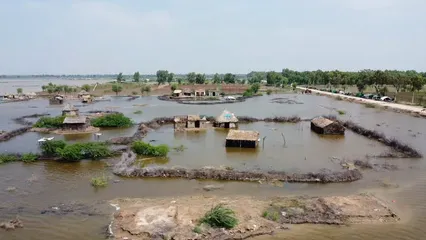
The study of ice and water is crucial for understanding environmental science and its implications for our future. Why is the study of ice and water important for environmental science?
Summary
The study of ice and water is essential for several reasons, from regulating climate to supporting ecosystems and providing freshwater resources. The cryosphere, which includes glaciers and ice sheets, plays a critical role in maintaining Earth’s climate by reflecting sunlight and regulating temperature. As glaciers melt, they contribute significantly to rising sea levels, which pose threats to coastal communities.
Understanding the water cycle is equally important, as it encompasses the movement of water through various states—evaporation, condensation, and precipitation. This cycle is crucial for replenishing freshwater resources, which are limited and under threat from climate change. Freshwater is vital for drinking, agriculture, and industry, making its study integral to human survival.
Moreover, the impact of climate change on ice and water systems is profound. Glacial retreat serves as a barometer for global warming, with each melting glacier telling a story about temperature changes over time. The interaction between ice, water, and atmospheric conditions influences weather patterns, leading to extreme events such as floods and droughts.
By studying these dynamics, scientists can develop better models to predict future environmental changes and formulate strategies for mitigation and adaptation. This knowledge is essential for decision-makers who must navigate the complexities of water resource management in an era of uncertainty.
In conclusion, the study of ice and water is not merely academic; it is a critical component of understanding and addressing the myriad challenges posed by climate change. The implications extend beyond the polar regions to every corner of our planet, impacting ecosystems, economies, and communities. Understanding these elements helps us protect our environment and secure a sustainable future for generations to come.
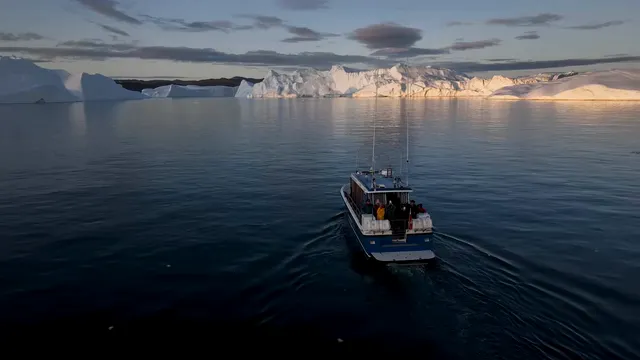
The Importance of Ice in Climate Regulation
The Cryosphere: Earth’s Climate Control System
The cryosphere is the frozen part of our planet. It includes glaciers, ice caps, and snow. Together, these icy regions play a vital role in regulating our climate. They reflect sunlight back into space, keeping our planet cooler. This process is known as albedo. When sunlight hits ice, it bounces off rather than being absorbed. Imagine wearing a white shirt on a sunny day; it keeps you cooler than a black one!
Ice helps maintain global temperatures. Without it, Earth would absorb more heat, leading to a warmer climate. The cryosphere influences weather patterns, affects ocean currents, and shapes ecosystems. When ice melts, it releases freshwater into the oceans, altering salinity and affecting marine life. This delicate balance keeps our planet’s climate in check.
Speaking of keeping things cool, why not enhance your home with an Ice Cube Tray? Perfect for parties or just chilling out on a hot day, these trays make ice-making a breeze. Don’t let your drinks suffer—get your ice game on point!
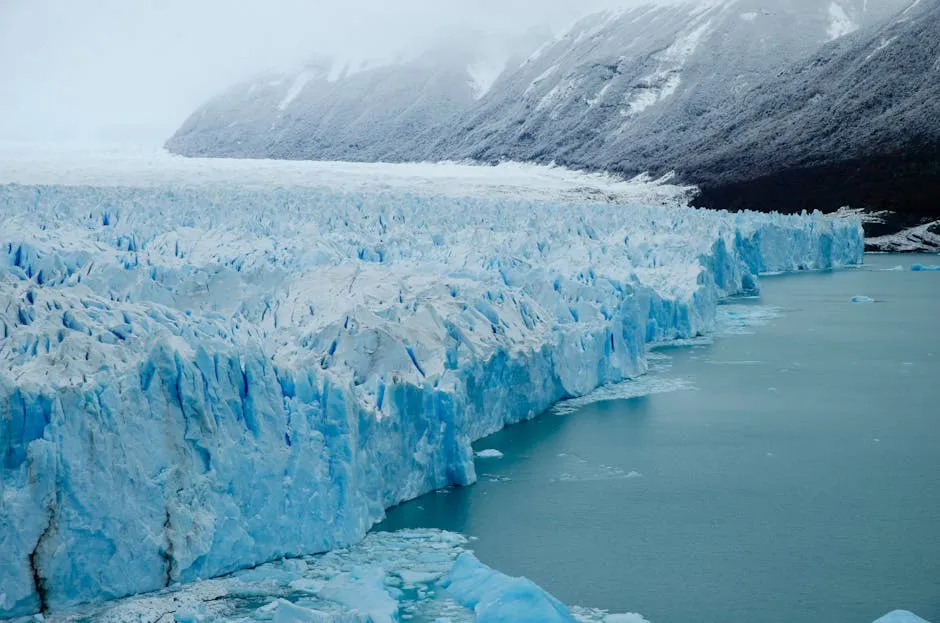
Impacts of Melting Ice on Sea Levels
Melting glaciers contribute significantly to rising sea levels. As temperatures increase, glaciers shrink, releasing water into the oceans. In fact, according to recent statistics, glaciers worldwide lose approximately 390 billion tons of ice annually. That’s like losing a small mountain every year!
This ice loss poses serious threats to coastal communities. Higher sea levels lead to more frequent flooding, erosion, and habitat loss. Coastal ecosystems like mangroves and coral reefs, which protect shorelines, are at risk. Millions of people living in low-lying areas face displacement. Cities like Miami, New Orleans, and Jakarta are already experiencing the impacts.
Moreover, rising sea levels threaten freshwater supplies. Saltwater intrusion affects drinking water sources and agricultural lands. This adds pressure to already strained resources, making it critical to address the issue of melting ice.

Ice as an Indicator of Climate Change
Glaciers serve as crucial indicators of climate change. Scientists use the concept of glacier mass balance to measure their health. A glacier gains mass through snowfall and loses it through melting. When losses exceed gains, glaciers retreat. This retreat is a clear sign of warming trends.
Take the Grinnell Glacier in Glacier National Park, for example. It has shrunk dramatically since the early 1900s. In fact, it has lost over 90% of its volume! This rapid retreat reflects temperature increases in the region, signaling broader climate changes.
If you’re planning a visit to Glacier National Park, don’t forget to grab a Glacier National Park Map. It’ll help you navigate the stunning landscapes and find the best spots to witness the majestic glaciers before they’re gone!
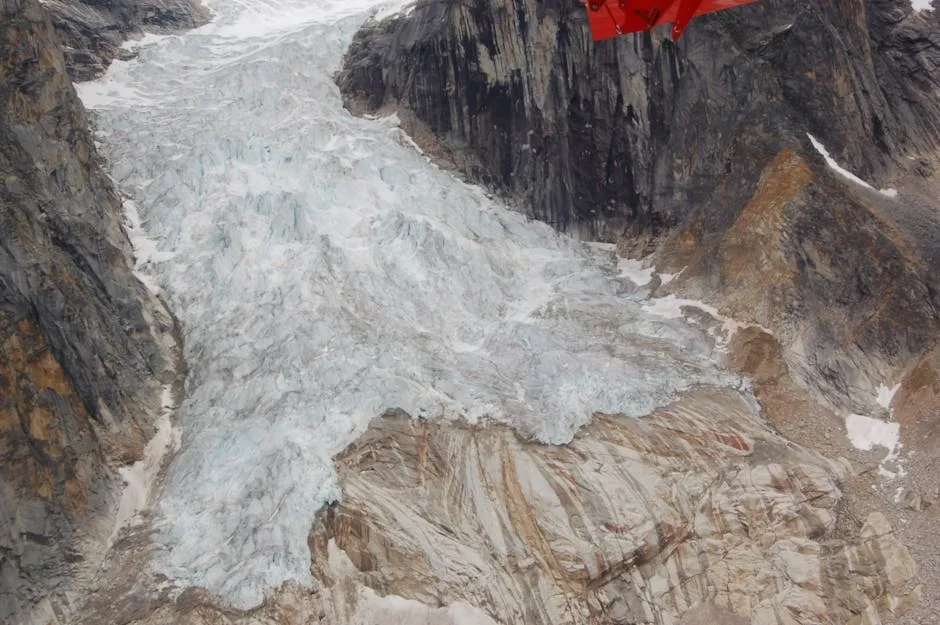
Glaciers and Ecosystems
Glacial Melt and Ecosystem Health
Glacial meltwater is a lifeline for many freshwater ecosystems. As glaciers shrink, they release water that feeds rivers and lakes, playing a crucial role in supporting aquatic life. Without this meltwater, many ecosystems would face severe stress.
Take the Amu Darya river in Central Asia, for instance. It heavily relies on glacial melt from the Pamir Mountains. During the summer, as temperatures rise, glaciers release water, ensuring a steady flow in the river. This meltwater nourishes the river’s ecosystem, supporting fish species and other wildlife.
In North America, the Colorado River is another vital example. Glacial melt from the Rocky Mountains contributes significantly to its flow. The river supports agriculture, drinking water, and habitat for countless species along its banks. Imagine a summer without this meltwater; the river would dwindle, impacting people and wildlife alike.
These ecosystems rely on glacial meltwater to maintain their health. As glaciers continue to retreat, freshwater ecosystems face increasing challenges. The loss of glacial meltwater can lead to reduced biodiversity and habitat degradation. Therefore, understanding and monitoring glacial melt is essential for preserving these ecosystems.
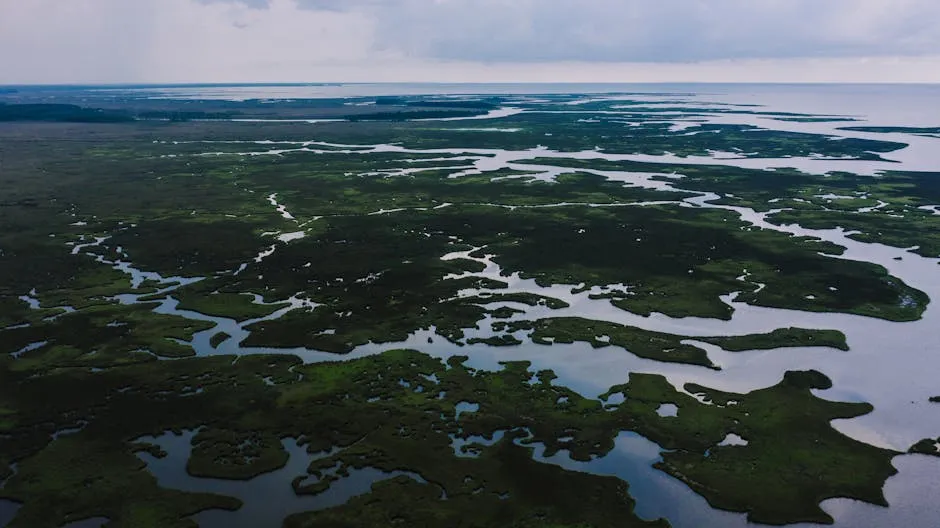
Biodiversity and Glacial Environments
Glacial regions are home to unique species adapted to icy conditions. From the resilient snow flea to the majestic Arctic fox, these creatures have evolved to thrive in harsh environments. Their survival depends on the delicate balance of their habitats.
The interdependence between species is significant in glacial ecosystems. For example, phytoplankton in glacial lakes serve as a primary food source for fish. These fish, in turn, are prey for larger predators. If one link in this chain weakens, it can have cascading effects throughout the ecosystem.
Moreover, species like the glacier lily bloom during the fleeting summer months, providing nourishment for pollinators. The loss of glaciers can disrupt these cycles, threatening both plant and animal life. Biodiversity is crucial for the resilience of these ecosystems. It ensures that they can withstand environmental changes and continue to thrive.
Protecting glacial environments is not just about saving ice; it’s about preserving a rich tapestry of life. The interdependence of species highlights the importance of maintaining healthy ecosystems. As glaciers recede, conservation efforts must focus on safeguarding these unique habitats and their inhabitants.
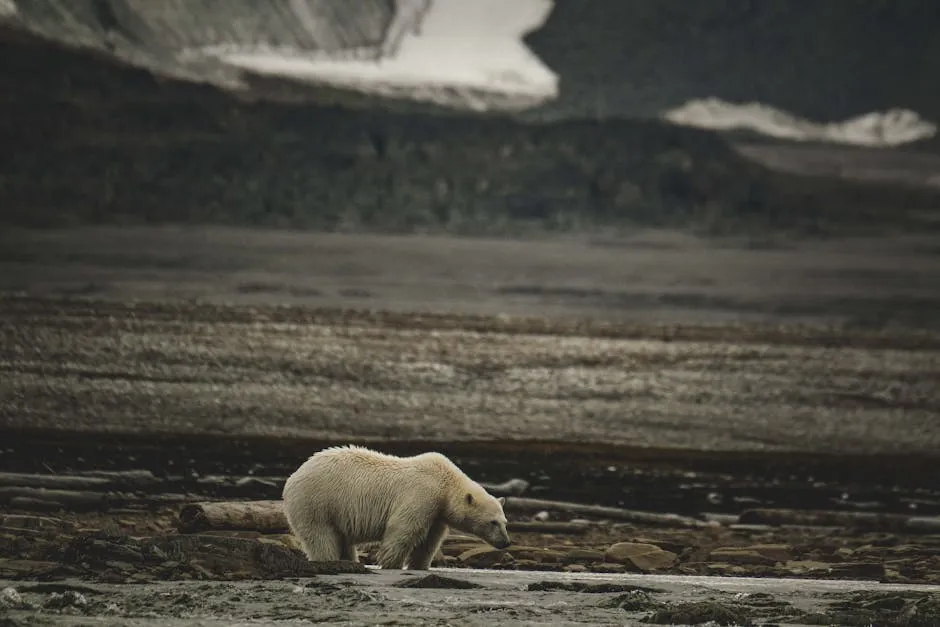
Human Dependence on Glacial Water
Communities worldwide depend on glacial meltwater for survival. In many regions, this water sources are crucial for drinking and agriculture. For instance, residents of La Paz, Bolivia, rely on melting glaciers for their water supply during dry spells. These glaciers serve as natural reservoirs, releasing water as needed.
In India, the Indus River system heavily depends on glacial melt from the Himalayas. This river supports millions of people and is vital for agriculture. Without adequate glacial melt, food security in the region would be at risk. Farmers rely on this water to irrigate crops, making it essential for their livelihoods.
Similarly, Switzerland’s Rhone Valley has historically depended on glacial meltwater for irrigation. As glaciers retreat, farmers face challenges in maintaining their agricultural practices. Innovative solutions, such as building artificial glaciers, aim to capture and store winter water for future use.
These case studies underscore the critical need for sustainable management of glacial resources. Communities are at the forefront of climate change impacts, facing water shortages as glaciers melt. Understanding the importance of glacial meltwater is vital for developing strategies that ensure water security for both people and ecosystems.
For those who love the outdoors, a Portable Water Filter can be a game changer. It ensures you have access to clean drinking water while trekking in remote areas, keeping you hydrated and safe!
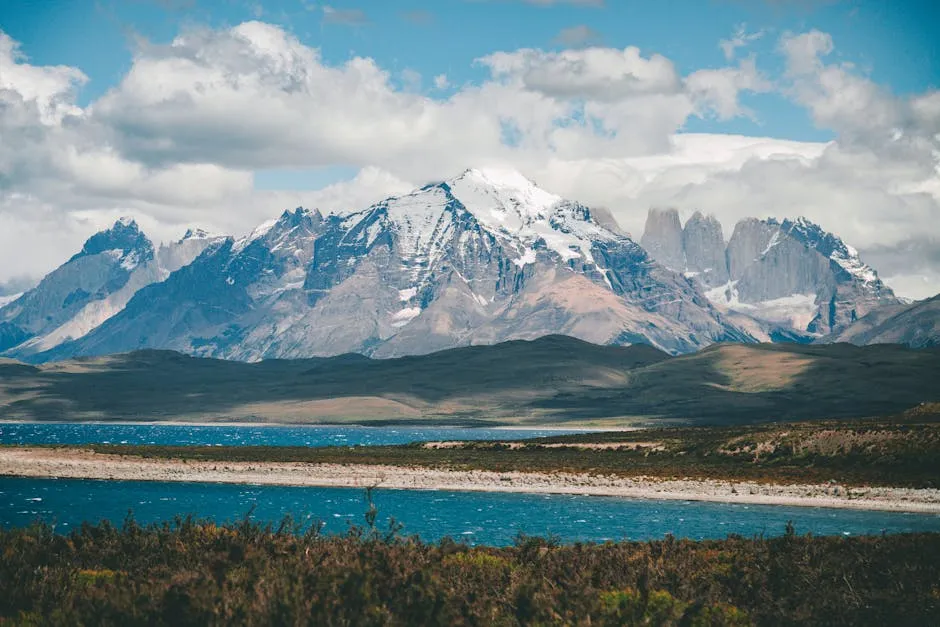
Technological Advances in Ice and Water Studies
Remote Sensing and Satellite Observations
Technology plays a pivotal role in monitoring ice and water changes. Remote sensing and satellite observations enable scientists to track these dynamics effectively. Organizations like NASA utilize advanced satellite technology to gather data on glaciers, ice caps, and water bodies globally.
The Global Precipitation Measurement (GPM) satellite, for instance, monitors rainfall and snow accumulation. By providing real-time data, it helps researchers understand precipitation patterns and their impact on water resources. This information is critical for managing freshwater supplies and predicting water-related challenges.
Additionally, satellites can assess ice thickness and movement. By analyzing this data, scientists can gauge the health of glaciers and project their future behavior. Such insights are crucial for understanding sea-level rise and its implications for coastal communities.
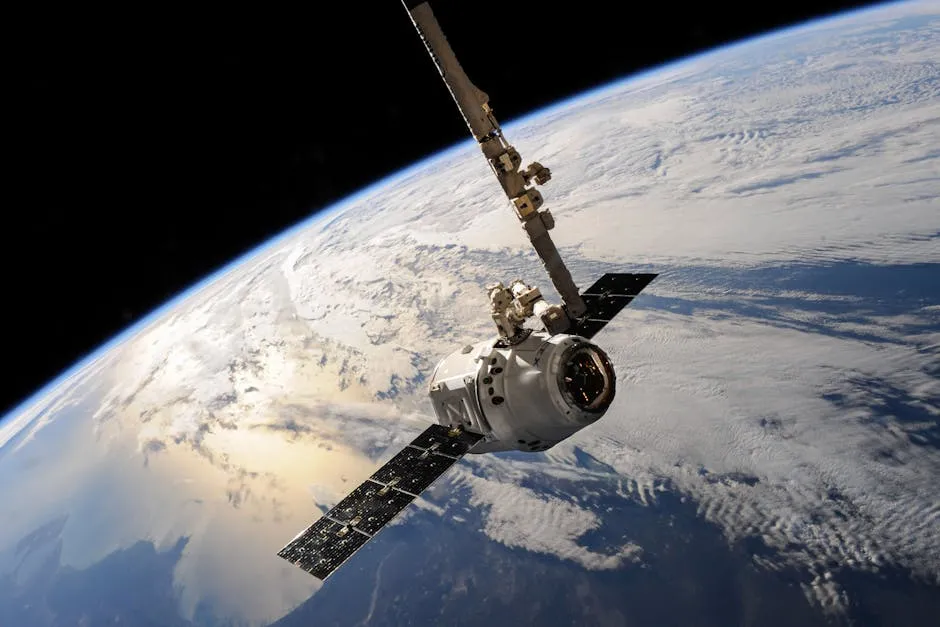
Modeling and Predictive Tools
Computer models are essential for grasping the complexities of ice and water dynamics. These models simulate various scenarios, helping researchers predict how changes in the cryosphere affect global climate patterns. They provide insights into future outcomes based on current trends.
For instance, models can forecast glacier retreat rates and their contributions to sea-level rise. This information is vital for policymakers tasked with developing climate adaptation strategies. By understanding potential impacts, decision-makers can implement proactive measures to mitigate risks.
Moreover, predictive tools inform conservation efforts. By identifying vulnerable ecosystems, scientists can prioritize areas for protection. This proactive approach is crucial in safeguarding biodiversity and ensuring the resilience of ecosystems amid climate change.
In summary, technological advances in ice and water studies provide valuable insights. They enhance our understanding of these critical resources and inform effective management strategies. As we face a rapidly changing climate, leveraging technology becomes increasingly essential for safeguarding our planet’s future.

Conclusion
The study of ice and water isn’t just an academic exercise; it’s crucial for our planet’s future. As we witness ice caps melting and water scarcity becoming a reality, the implications extend far beyond polar regions. These changes impact ecosystems, human societies, and global stability. The cryosphere—the frozen areas of our planet—reflects sunlight and regulates temperatures, working like nature’s air conditioner. When glaciers melt, they release freshwater, affecting ocean salinity and disrupting marine life. This domino effect can lead to severe weather patterns and rising sea levels, threatening coastal communities.
Investing in ice and water research equips us to face these challenges head-on. It helps us understand the delicate balance that sustains life on Earth. With glaciers acting as indicators of climate change, their retreat tells us about the ongoing warming trends. By studying these dynamics, scientists can develop better models to predict future changes. Such knowledge is essential for crafting effective policies and conservation strategies.
Furthermore, understanding ice and water systems can inform water resource management, benefiting agriculture and drinking supplies. As freshwater is already limited, protecting these vital resources must be a priority. The knowledge gained will help us ensure a sustainable future for generations to come. So, let’s rally behind the study of ice and water—it’s not just about science; it’s about safeguarding our shared home.
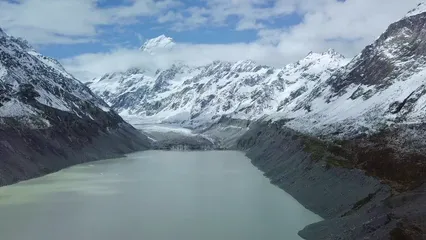
FAQs
Why is freshwater so scarce?
Freshwater constitutes only about 3% of Earth’s water supply. Most of it is trapped in glaciers and ice caps, making it a limited resource.
How do glaciers affect local weather patterns?
Glaciers regulate local climates by influencing temperatures and contributing to precipitation through the water cycle. Without them, weather patterns could shift dramatically.
What can we do to help protect our water resources?
We can conserve water, reduce waste, and support sustainable water management policies. Every small effort counts in preserving our precious freshwater supplies.
Speaking of water, if you’re looking to stay hydrated in style, check out this BPA-Free Reusable Water Bottle. It’s not only eco-friendly but also perfect for keeping your drinks cold on the go!
Please let us know what you think about our content by leaving a comment down below!
Thank you for reading till here 🙂
All images from Pexels




